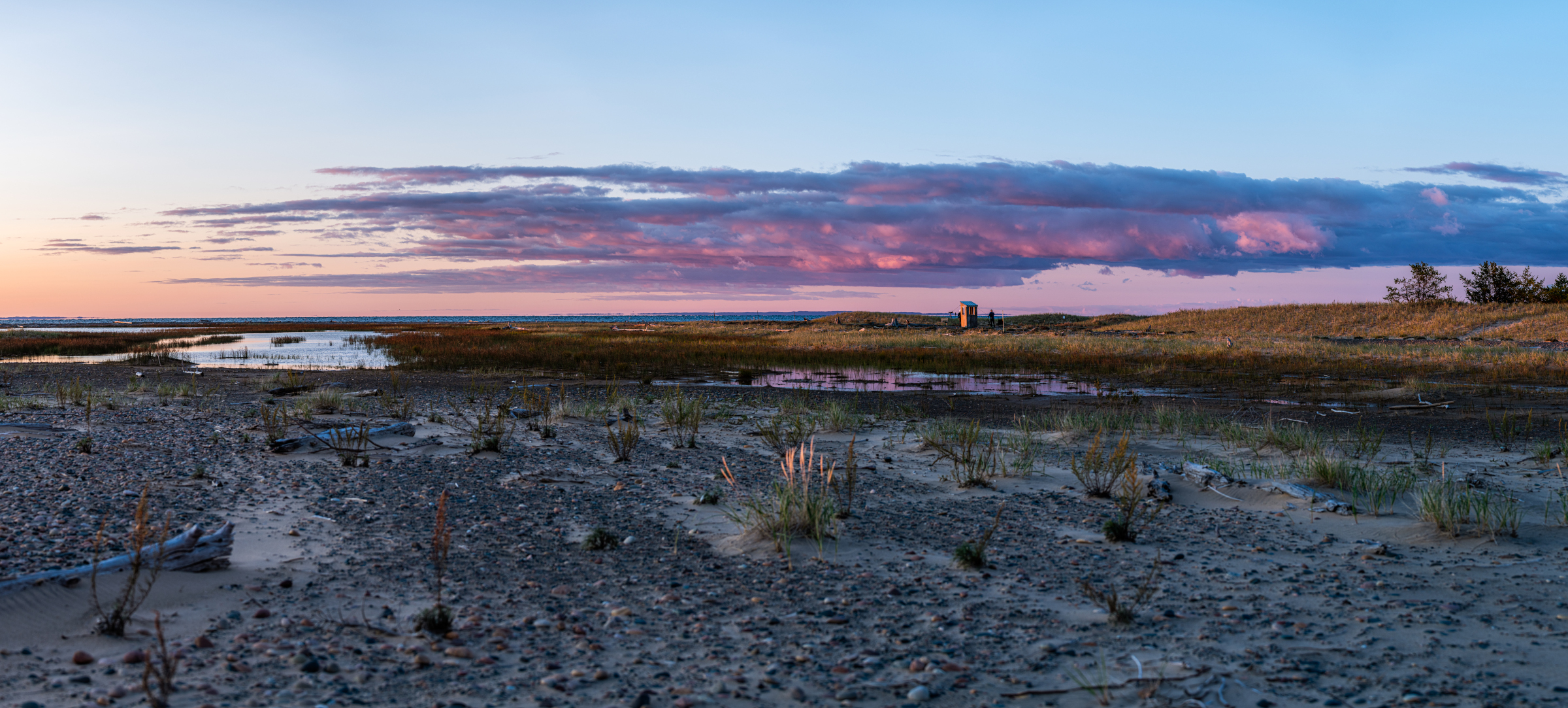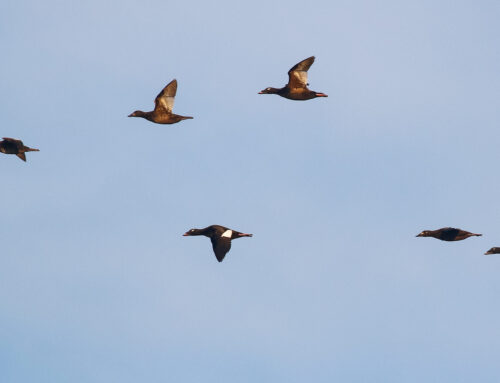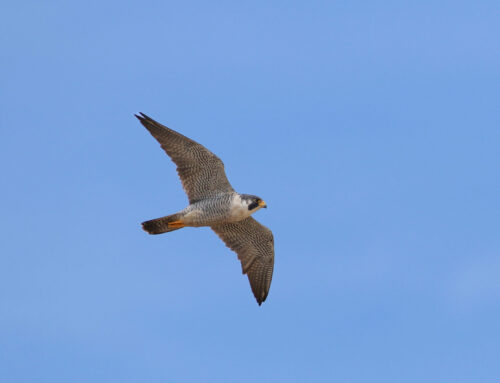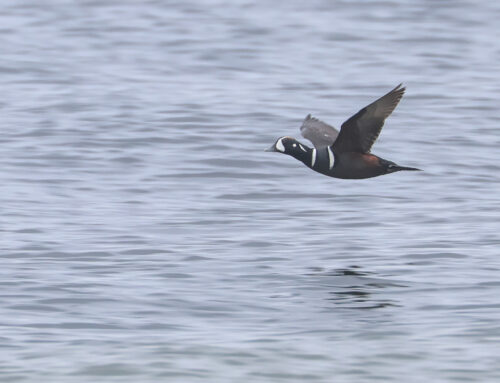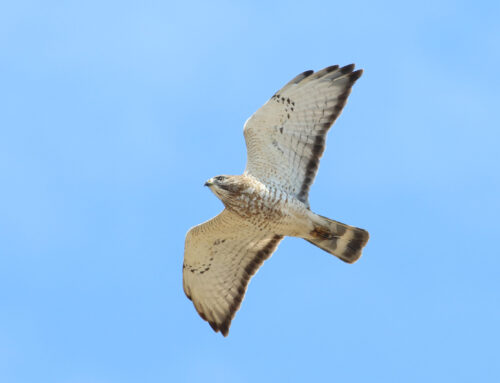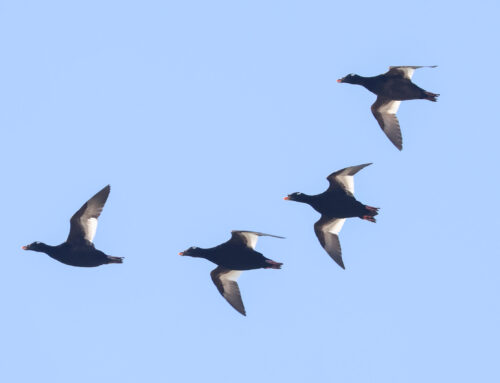It’s abundantly clear that Whitefish Point is a great spot for birds. While the geography is the central factor which steers the diversity we experience at the fall waterbird count, the habitats offered by the point play a significant role.
Many birds are specialists. With roughly 10,000 known species on the planet, it’s of obvious advantage if species aren’t competing for the same resources. Throughout time, many birds have evolved to prosper in specific environments or by specific strategies. This is broadly evident by how waterfowl are found in water, and acutely evident by species that have co-evolved alongside others(the Hawaiian I’iwi and koli`i flower for instance). A clear examples of this is the Galapagos, or Darwin’s, finches. From ancestral species many different birds evolved to utilize different resources.
So, how does this relate to Whitefish Point? We’re lucky to have a wide variety of habitats and features that give us the diversity we observe here. Though on migration birds are less particular than when they’re breeding or over-wintering, we still see them finding their familiar niches at the point.
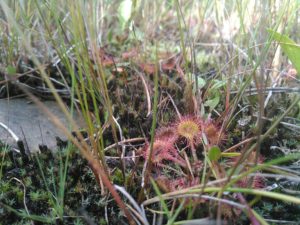
Sundews on the marsh’s edge
Taking a walk down the boardwalk, we begin in a forest of mostly jack pines. This is where you’ll notice songbirds searching for food together. Mixed flocks of different species might appear to be feeding in the same ways, but there are slight differences that allow them to continue to work together. On the boardwalk you’ll pass a few boggy spots. If you take a second to look down you might notice sundew, a beautiful carnivorous plant on the edges of the marshes. These marshes are habitat that appeal to Wilson’s Snipe, Sora, and American Woodcock. These secretive birds skulk through the tall grasses these bogs contain, offering protection from predation.
The forest gives way to sandy mats of low lying plants accented by red bearberries. Even in the rocky beach you might see some Coast Jointweed peeking out, clinging to its tiny home on the rocky shore. Flocks of longspurs, pipits, larks, and sparrows scurry through the brush picking through the sand and shrubs, taking off in great hurry when buzzed by a hunting raptor.
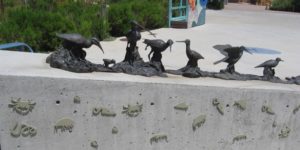
Shorebird diversity is easily observable
From the luxurious waterbird shack you’ll overlook a pond. This is a relatively new feature to the point, telling of the ephemeral topography carved by the storms of Lake Superior. Shorebirds frequent this pond, and there are few better examples of specialization than shorebirds. You can see a number of different species in the same area, but they don’t seem to mind each other. Shorebirds have slight differences that allow them to utilize slightly different feeding strategies. Bill shape and length allow them to penetrate to different levels of the substrate to feed. Longer or shorter legs restrict the depth of water the birds utilize. With these acute differences, it allows diversity to flourish in these small shorelines.
And of course, there’s the point. On one side is Whitefish Bay, on the other Lake Superior. Many raptors and waterbirds follow the shoreline on their transits south. When storms bring in strong south winds, it isn’t uncommon to watch waterbirds hug the lake shore until reaching the point. The protection this shoreline offers is clear when they battle the unrestricted headwinds with great effort upon rounding the point.
The diversity of the flora and fauna is astounding here and this is encouraged by the diversity of habitats contained at Whitefish Point. On your next visit, I urge you to look for the details that paint the amazingly complex portrait of this unique location.
Featured image by David Sergant
Text and embedded photos by Fall Waterbird Counter, Steve Backus

